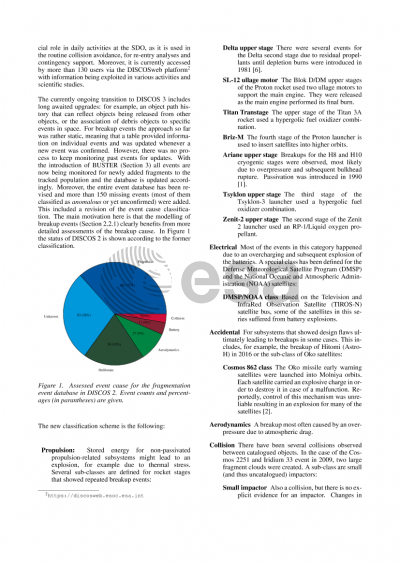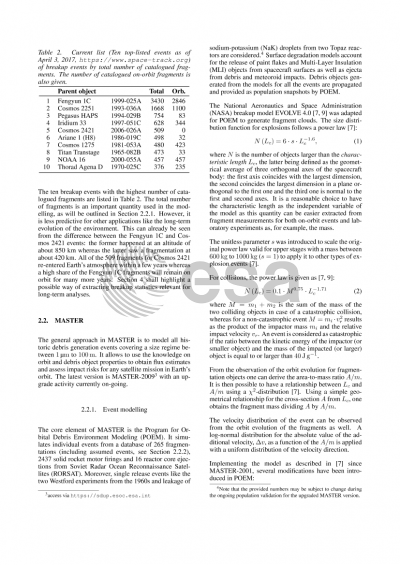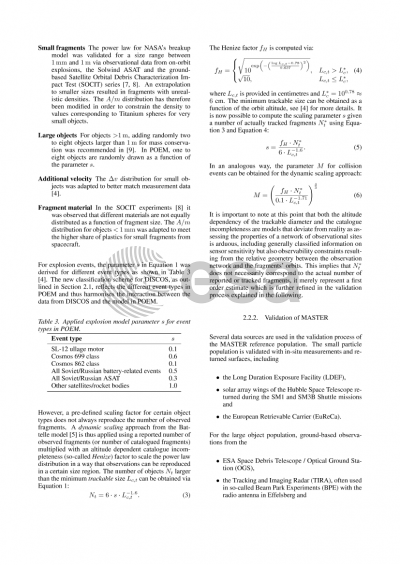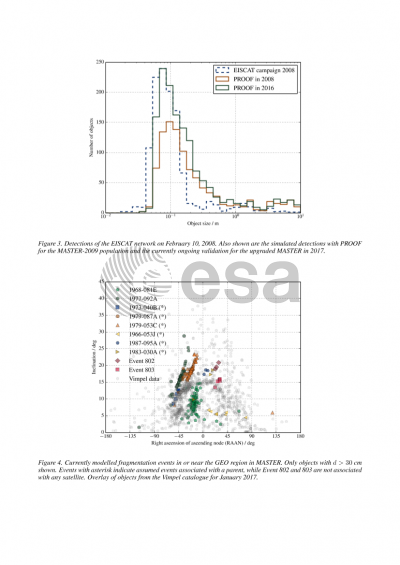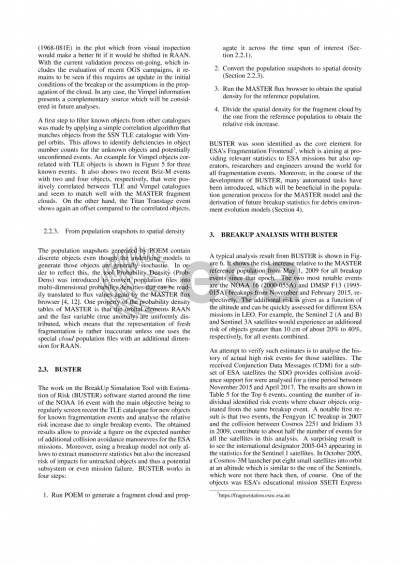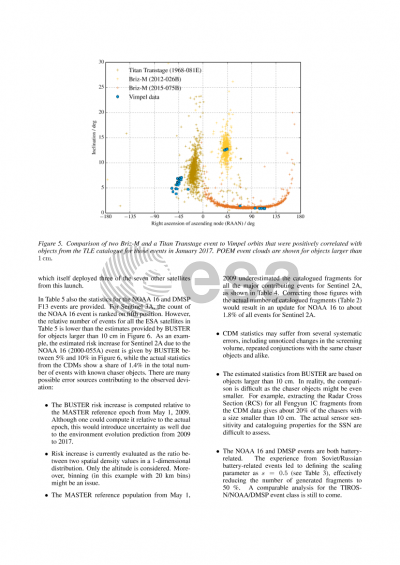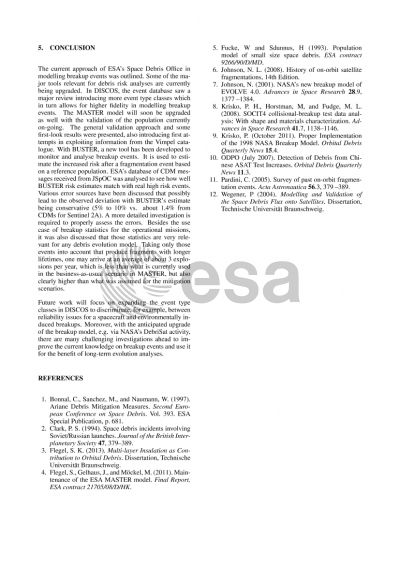Document details

Abstract
The dominating source of space debris are fragmentation events, mainly due to on-orbit explosions and collisions. Late 2015, the breakup of the NOAA 16 satellite in a mean altitude of about 850~km resulted in more than 350 fragments that are currently being tracked by the Joint Space Operations Center (JSpOC). Shortly after the event, the Space Debris Office started assessing the risk increase for the currently operated missions by ESA. With Sentinel 2A and Sentinel 3A being operated close to an altitude of 800 km, the additional risk increase due to that event was about 5 % considering debris objects larger than 10 cm.
The work on the BUSTER (BreakUp Simulation Tool with Estimation of Risk) software started around that time with the main objective being to regularly screen recent fragmentation events and analyse the relative risk increase due to single breakup events in order to support ESA missions. Using the POEM (Program for Orbit Environment Modeling) software, the fragmentation of a spacecraft is simulated via the NASA Breakup Model. Besides the subset of objects tracked from ground, this approach also allows to estimate additional risk due to the untracked population. Moreover, the evolution of the risk figures for the foreseen mission span can be obtained by the propagation of the orbits of the individual objects.
The BUSTER software was soon identified as the core element of ESA's Fragmentation Frontend, which is aiming at providing relevant statistics to ESA missions but also operators around the world. Moreover, the results can be used as input to other applications, such as the population generation for ESA's Meteoroid and Space Debris Terrestrial Environment Reference (MASTER) model or the derivation of future breakup statistics for debris environment evolution models.
In this paper, BUSTER will be presented in the context of the Fragmentation Frontend. In addition, an overview on the required changes in the way fragmentation events are represented in ESA's Database Information System Characterising Objects in Space (DISCOS) will be given, highlighting aspects related to fragment categorization and size estimation, assessment of key parameters like the breakup epoch, but also the required analyst tasks for past and new events.
Preview

